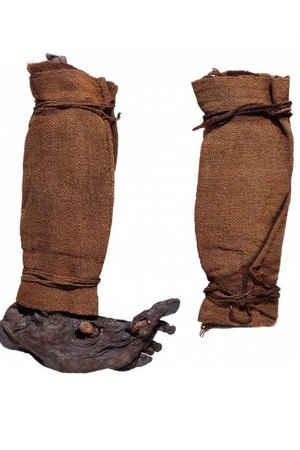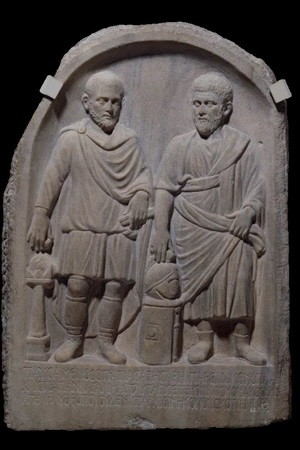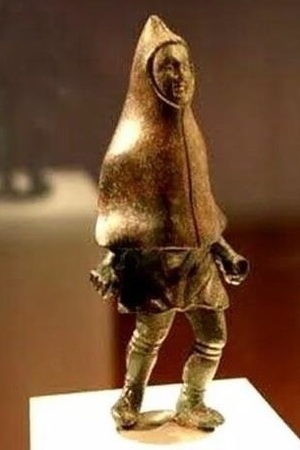Wrappings
Warming the hands and legs with strips of fabric, known as wrappings, was widely practiced among various peoples living in Europe during antiquity. Wrappings insulated the limbs and protected against chafing when wearing military gear such as greaves and manicae. According to surviving depictions, wrappings were widely used by gladiators and were made from thin fabric, presumably wool or linen.
Archaeological finds are scarce due to the poor preservation of fabric and the difficulty of identifying it specifically as wrappings. The only complete wrapping found in Søgård Mose (near the Danish city of Viborg) was used for warming the shin. It is a rectangular piece of fabric wrapped around the leg and secured with a braided cord.
Archaeologists have also found images and figurines showing Roman citizens using wrappings. These archaeological finds are mainly from the northern Roman provinces located in present-day Germany and Britain. Thus, there is reason to believe that the practice of warming legs with wrappings was common not only among Celtic tribes but also among all ancient peoples living in cold climates.
Related topics
Celts, Men in Ancient Rome, Legionary, Auxilary-hastat, Sagittarius





